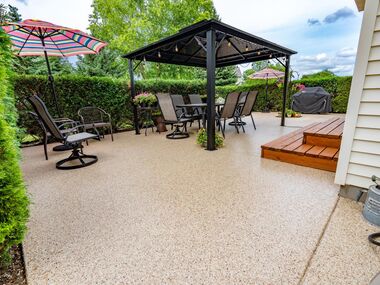How Your Lakefront Home Is Affected by Each Season

Raleigh, North Carolina is surrounded by several bodies of water, including the long, branching Jordan Lake to the west and Falls Lake to the north. Smaller lakes and rivers are scattered about as well, offering plenty of opportunities for waterfront living. If you’re fortunate enough to live right by the lake, you’re probably also well aware that lakefront living comes with certain caveats as well. All properties are susceptible to environmental damage, but those right next to the water have to deal with more extreme and unique conditions than most. Moreover, lakes behave differently as seasons change, meaning your home must be prepared for a wide array of conditions throughout the year.
Let’s outline how your lakefront home may be affected by each season so you can protect its exterior surfaces from harm all year long.
How Seasons Impact Lakefront Homes
Summer
Summertime is arguably the best time to live by the lake, which is why so many people invest in lakefront properties that they primarily use during this season. Lakes undergo summer stratification during this time, wherein the warmer weather separates water into two distinct layers -- the water’s surface remains warm while the bottom layers remain cold. This effect doesn’t have major implications on your property itself, but it may encourage you to get in the water more often and potentially bring moisture inside your home if you don’t fully dry off beforehand. The more direct summertime threats to your lakefront home come in the form of harsh sunlight (living on the lake doesn’t typically afford your home much shade, so the hot summer sun has a much stronger impact on your property’s exterior), high levels of humidity in the air, heavy rainfall, windswept debris during storms and high winds, and wood-boring pests like bees, ants, and beetles. It’s a good idea to perform some power washing toward the end of summer to clear away any dirt, debris, and mold that may have accumulated during the season.
Autumn
When things start to cool down in the fall, those once separated layers in the water begin to mix, increasing the lake’s oxygen levels and releasing gases (like hydrogen sulfide) that can leave a lingering odor. Meanwhile, these rapid fluctuations in temperature and humidity can cause your exterior surfaces to expand and contract, making them more susceptible to moisture intrusion, fracturing, and so on. The seasonal transition from summer to fall can also yield plenty of rain and high winds, bombarding your lakefront home with water and debris. Certain summer pests also remain active during autumn, and others become more prominent this time of year. Make sure your exterior surfaces are well protected from these threats with high-quality coatings (deck stain will keep moisture and pests from damaging your deck, for instance).
Winter
Lake effect snow poses the greatest threat to a lakefront home during the winter. This phenomenon occurs when cold air can freely move across the open air over a particular lake, gaining moisture from the warmer water below and accumulating into bigger and bigger clouds that eventually release thick, wet snow upon reaching land. Fortunately, only certain lakes (namely the Great Lakes) experience this winter effect in North America, and none of the lakes in Raleigh, NC are included here. Still, living by any lake can increase the regularity and intensity of snowfall due to higher moisture levels. During particularly bad weather, your lakefront home can get covered in snow and ice, damaging your siding, clogging your gutters, and weighing down your roof. Sharp rain and sleet can also occur during winter. Fortunately, you won’t have to worry about too many pests this time of year. By the time winter is over, however, you may need to invest in siding repair, paint touch-ups, gutter and roof repairs, and more.
Spring
As lakes thaw out toward the end of winter and beginning of spring, the water begins to stratify once again. Spring storms bring more water to lakes, raising water levels and increasing the potential for flooding. If your lakefront home isn’t positioned high enough above this threshold, it can experience flooding around this time of year, especially in the basement/foundation. Spring also sees the return and growth of algae, mold, and mildew, which can thrive on your exterior surfaces if they remain damp and dirty. Migratory birds and other pests will also begin to return with the warmer weather, putting your property in harm’s way.
Making the Most of Lakefront Living
If you’re like most people, the pros of living by the water outweigh the potential cons. As long as you’re aware of the relevant seasonal threats and how to combat them, you can continue enjoying your waterfront home for many years to come. Read our recent blog, “How to Maintain Waterfront Exteriors” for advice on protecting your property from all waterfront threats. And if you need help maintaining or improving your lakefront property, look no further than Anderson Painting. We offer residential exterior painting, siding repair/replacement, carpentry, power washing, and so much more.
To learn more about us and all we do, call today at 919-610-1855 or email us at info@andersonpaintingnc.com!



